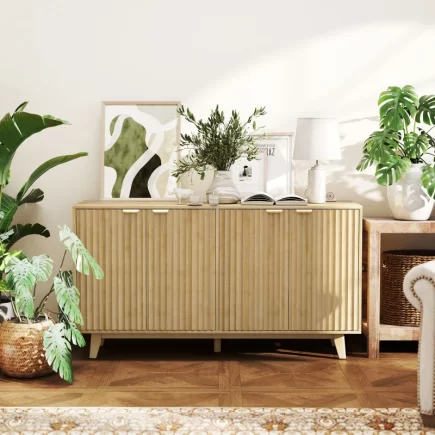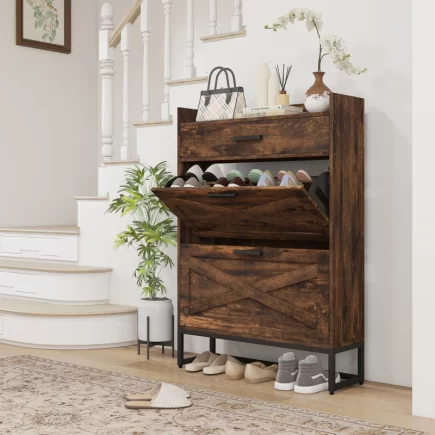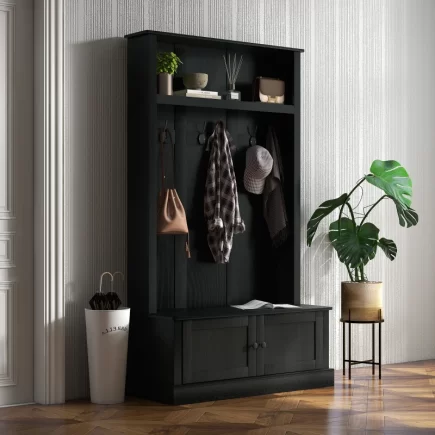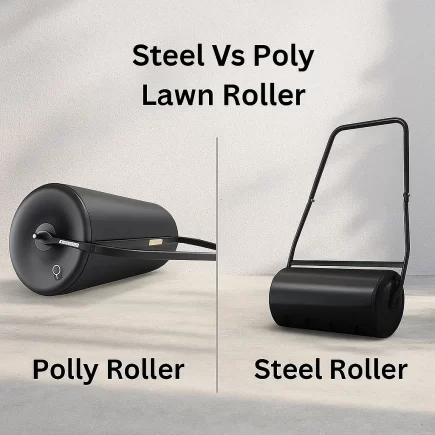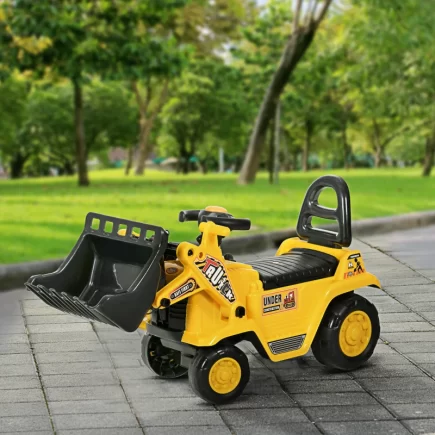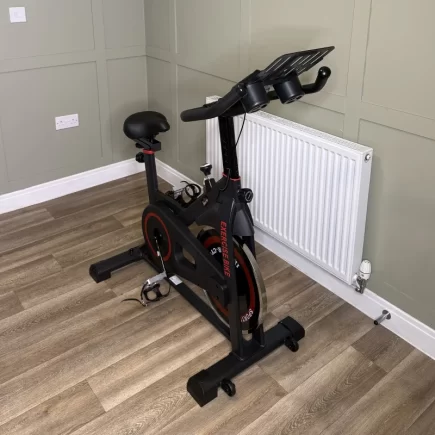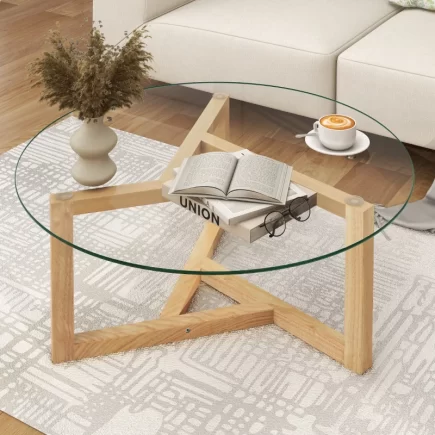Sideboards are a popular furniture choice for homes and offices due to their elegance and functionality. Whether made from wood, metal, or glass, each material requires specific care to maintain its beauty and extend its lifespan. Proper cleaning techniques not only preserve the aesthetic but also ensure longevity. This article will show you the best methods to clean wood, metal, and glass sideboards, using the right tools and techniques for each material.

How to Clean a Wooden Sideboard
Wood sideboards are both elegant and durable. They often become the centerpiece in a room, but they also require specific care. Wood can be sensitive to moisture and harsh chemicals, so cleaning needs to be done with care.

Materials You’ll Need for Cleaning Wooden Sideboards:
- Microfiber Cloth: For dusting and wiping down surfaces without scratching.
- Wood Cleaner or Mild Soap: A gentle cleaner designed for wood surfaces.
- Water: For diluting the cleaning solution and wiping down surfaces.
- Wood Polish or Beeswax: To restore shine and protect the wood’s surface.
- Baking Soda: For treating stubborn stains.
- Wood Conditioner: To prevent the wood from drying out and cracking.
Step-by-Step Process for Cleaning Wood Sideboards:
- Dust the Surface: Start by gently dusting the sideboard with a microfiber cloth. Dusting regularly is key to preventing dirt buildup, which could scratch the wood when cleaning.
- Clean with Wood Cleaner or Soap Solution: After dusting, apply a small amount of wood cleaner or a mild soap solution to a damp microfiber cloth. Always test the cleaner on an inconspicuous area first to ensure that it won’t affect the finish. Gently wipe down the wood, paying extra attention to any stains or spots.
- Tackle Stubborn Stains: For tough stains, use a paste made from baking soda and water. Apply the paste to the stain and rub it in gently with a cloth. Baking soda is a mild abrasive and can help lift stains without damaging the wood.
- Condition the Wood: After cleaning, it’s important to condition the wood to prevent it from drying out. Apply a wood conditioner or beeswax with a clean cloth, massaging it using circular motions. This helps preserve the wood’s natural moisture and flexibility.
- Polish the Wood: Once the conditioner has been absorbed, apply a wood polish to enhance the shine and provide a protective layer. Buff the surface with a clean cloth to restore the wood’s natural luster.
How to Clean a Metal Sideboard
Metal sideboards, often made from stainless steel, brass, or aluminum, offer a sleek and modern look. While they are durable, metal surfaces require care to avoid tarnishing or scratching.

Materials You’ll Need for Cleaning Metal Sideboards:
- Microfiber Cloth: For gentle dusting and cleaning.
- Vinegar: A natural cleaner for removing fingerprints and smudges from stainless steel.
- Metal-Specific Cleaner or Polish: To restore shine to metal surfaces.
- Soft Sponge: For gently cleaning the surface.
- Rust Remover: For rust-prone metals like steel or iron.
- Dish Soap: A mild detergent for cleaning.
- Water: For rinsing and wiping down surfaces.
- Metal Protectant: To preserve the finish and protect against future tarnishing.
Step-by-Step Process for Cleaning Metal Sideboards:
- Dust the Surface: Use a microfiber cloth to remove any loose dirt or dust from the metal surface. Regular dusting will prevent the accumulation of grime, which can lead to scratches during cleaning.
- Clean with Metal Cleaner or Polish: Apply a metal cleaner or polish to a microfiber cloth and gently wipe down the surface. Make sure to use a cleaner that is specific to the type of metal you’re cleaning. Stainless steel, for example, may require a different cleaner than brass.
- Remove Fingerprints: Stainless steel sideboards are notorious for showing fingerprints. To remove them, spray a mixture of vinegar and water on the surface. Wipe it off with a clean microfiber cloth to eliminate smudges without leaving streaks.
- Treat Rust: If you notice any rust on the metal, apply a rust remover to the affected areas. Use a soft sponge or fine steel wool to gently scrub away the rust, being careful not to scratch the metal surface. Afterward, apply a protective coating to prevent further corrosion.
- Polish the Metal: After cleaning, apply a thin layer of metal polish to the surface. Buff the metal to restore its shine and provide a layer of protection against tarnishing.
How to Clean a Glass Sideboard
Glass sideboards are sleek and stylish, but they require special attention to maintain their shine and clarity. Glass is more susceptible to smudges, fingerprints, and streaks, which can make it look dirty even after a cleaning session.

Materials You’ll Need for Cleaning Glass Sideboards:
- Glass Cleaner: To achieve a streak-free shine.
- Microfiber Cloth: For lint-free cleaning and wiping.
- Vinegar: A natural cleaner for tough stains and water spots.
- Water: To dilute the cleaning solution and rinse.
- Lint-Free Cloth or Paper Towels: To dry the surface without leaving streaks.
- Glass Scraper: For removing tough stains (optional).
Step-by-Step Process for Cleaning Glass Sideboards:
- Dust the Surface: Use a microfiber cloth to remove any dust or debris from the surface. This prevents dirt from being rubbed into the surface while cleaning.
- Clean with Glass Cleaner: Spray a generous amount of glass cleaner onto the surface, or apply it to a microfiber cloth. Wipe the glass in circular motions, ensuring you cover all areas and remove fingerprints and smudges. Use a separate dry cloth to buff the glass and leave it streak-free.
- Remove Stubborn Stains: For tough stains or water spots, mix equal parts vinegar and water. Apply the solution to the stained area and wipe with a microfiber cloth. This will help to break down mineral deposits and grime.
- Prevent Water Spots: Glass can quickly accumulate water spots, especially if you live in an area with hard water. After cleaning, dry the surface immediately to avoid any lingering water spots.
- Polish for Extra Shine: To achieve a sparkling finish, buff the glass gently with a lint-free cloth. This will give it a streak-free shine and enhance the clarity of the glass.
Cleaning Techniques for Sideboards
Cleaning your Sideboard according to its material is essential to maintain its beauty and longevity. Wood, metal, and glass sideboards each require specific cleaning methods and products to prevent damage. Regular cleaning improves appearance and extends the life of your furniture. Always use the right cleaners, tools, and techniques to preserve your sideboard’s integrity and keep it looking fresh for years.
FAQs
1. How often should I clean my sideboard?
It’s recommended to clean your sideboard at least once a week to remove dust and prevent grime buildup. Deep cleaning should be done every month or as needed.
2. What’s the safest way to clean a sideboard with intricate carvings?
For sideboards with intricate carvings, use a soft brush or microfiber cloth to gently dust the grooves. Avoid harsh cleaners that could discolor or damage delicate details.
3. Can I use furniture polish on my glass sideboard?
It’s best not to use furniture polish on glass sideboards, as it can leave streaks. Instead, use a glass cleaner for a streak-free finish.


